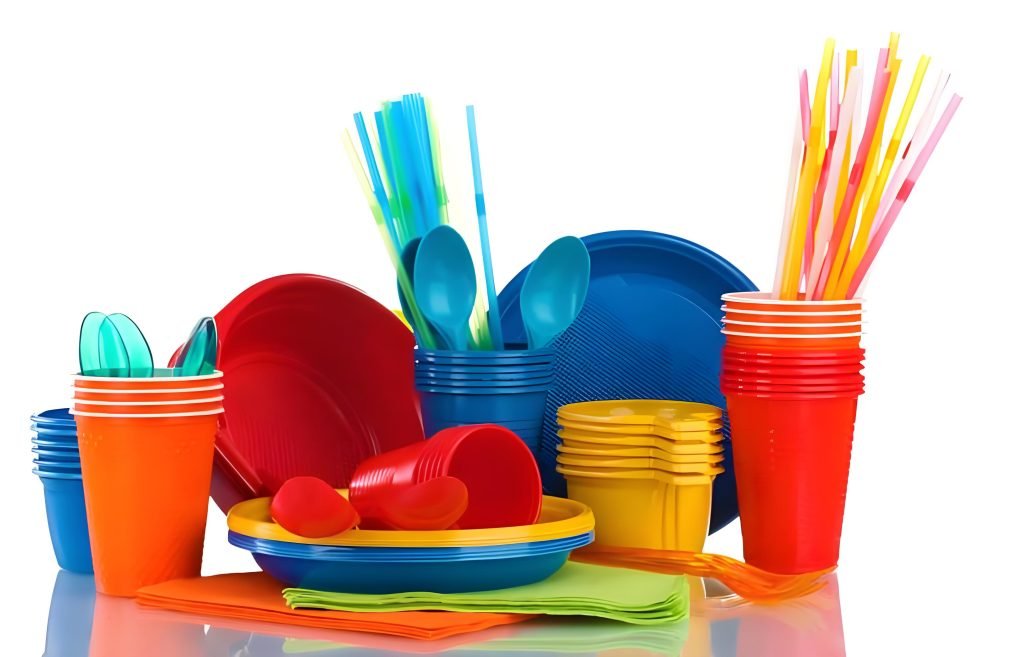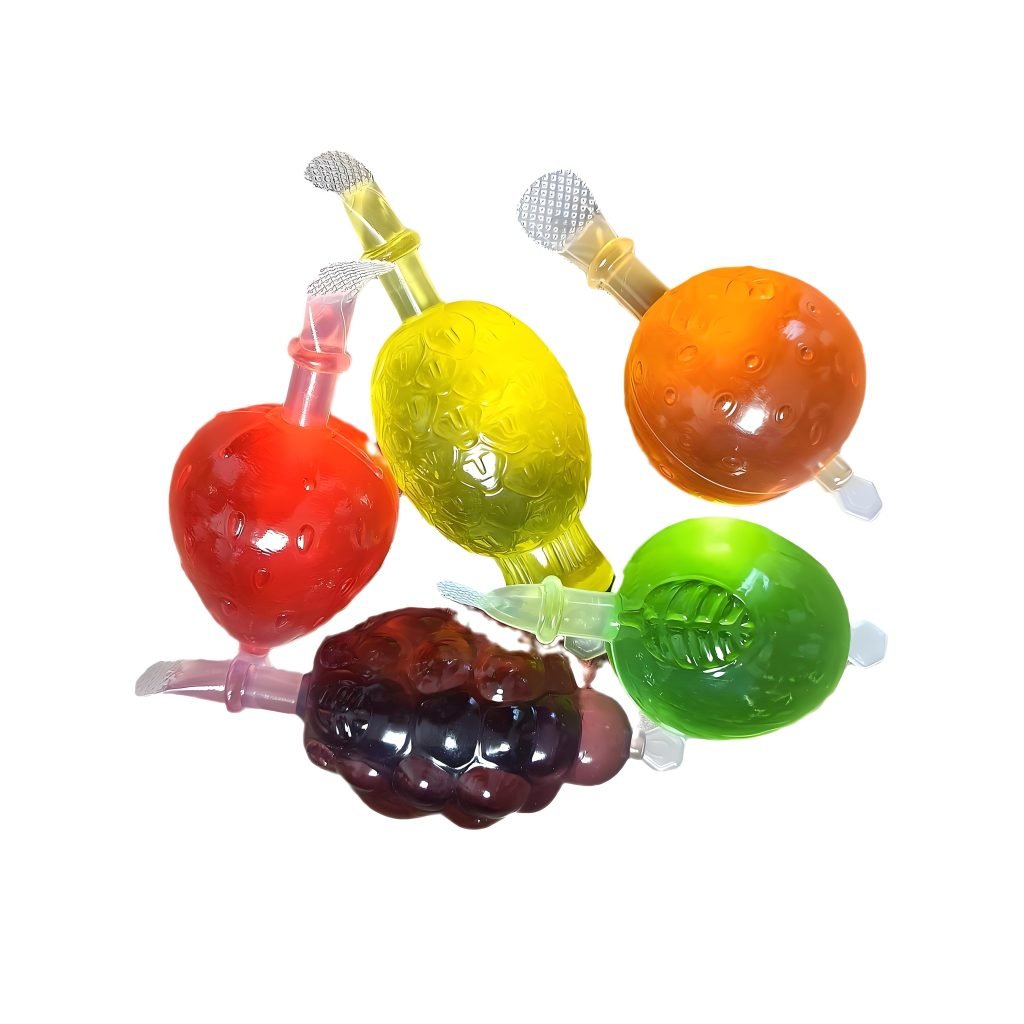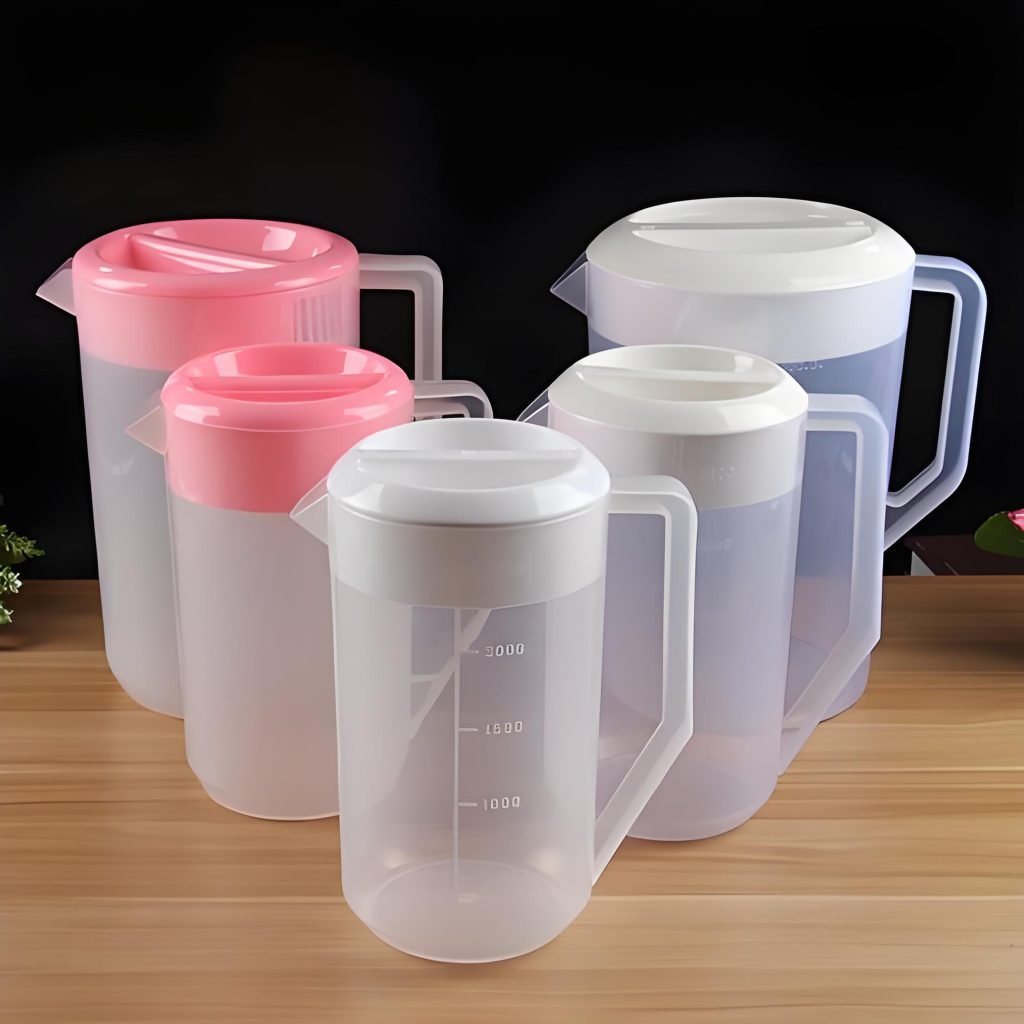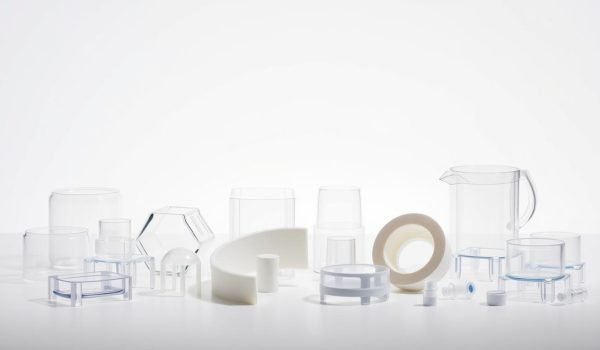Surprising fact: a recent study detected microplastics in carotid plaques and linked them to higher cardiovascular risk, underscoring why material choice matters beyond labels.
The FDA’s Division of Food Contact Notifications assesses substances for use conditions like temperature, food type, and cleaning. You need clear rules when designing containers, packaging, or processing parts for food contact.
Common safe resin numbers include #2 HDPE, #4 LDPE, and #5 PP. Some #3 and #7 resins raise concerns because of additives such as phthalates or BPA. PET works well for bottles but can show increased migration when heated.
In this guide you’ll get a practical roadmap to pick the right polymers and options, align traceability and testing with audits, and avoid pitfalls like heat-induced migration or incompatible cleaning that harm products and people.
Why Food Grade Plastic Matters Today
You operate where safety, regulatory compliance, and consumer trust meet. Choosing food-grade plastics with documented approvals protects your products and your reputation.
The FDA evaluates materials by intended contact and conditions through Food Contact Notifications. Resin numbers help: #2, #4, and #5 are commonly safer choices while #3 and some #7 need extra scrutiny.
Temperature, chemistry, and exposure time drive migration levels. Polypropylene tolerates heat and can support microwave or dishwasher use. Polystyrene and PVC should not be heated.
Acidic or oily items raise leaching risk. That means your use case — not just the resin number — must guide selection, validation, and testing.
When you match performance needs (clarity, barrier, rigidity) to vetted resins, you reduce recalls, extend shelf life, and support health-forward claims.
What Are Food Grade Plastics

Defining a safe contact material depends on composition, intended use, and validation under real operating conditions.
Definition grounded in FDA compliance and food contact
A material qualifies for food contact when the FDA or similar authorities review its exact formulation and use-case. The Division of Food Contact Notifications evaluates temperature, the types of food it will touch, and cleaning or sanitizing methods.
That review determines whether a given material can be used without causing harmful migration or off-flavors under specified conditions. The resin number on a container gives a quick clue, but approval depends on the full formulation and use parameters.
Where these materials appear in equipment, packaging, and containers
In your plant, approved materials show up as wear parts on conveyors, scraper blades, guide rails, cutting boards, hoppers, and chutes where continuous contact occurs.
On the packaging side, they appear in containers, closures, liners, and films chosen for barrier performance and reuse cycles. Common types include polyethylene terephthalate (PET), hdpe, ldpe, polypropylene, and polystyrene.
Remember: a material may be food-contact rated yet still need use limits—such as avoiding high-temperature sanitation or acidic and oily products at elevated temperatures. Match mechanical and barrier needs to cleaning protocols to keep your operation compliant and your product safe.
Food-Grade vs. Food-Safe Plastics
Material approvals tell you a resin can be used in contact with food, but they do not guarantee safety for every use case. You must match intended use, temperature, and cleaning to the material to confirm it is truly food safe.
Key differences and real-world examples
Food-grade identifies materials acceptable for contact; food-safe confirms a specific material is safe under your exact conditions. A container made for dry cereal may be fine at room temperature but unsafe for hot soup.
Polypropylene often tolerates microwave cycles and dishwashers, so it can work for reheating. Polystyrene and PVC should never be used with high heat or hot fills.
How use, temperature, and cleaning change safety
Heat, prolonged contact time, and harsh cleaning chemicals raise migration risk and can release toxins. Acidic or oily items extract additives more readily than neutral, watery products.
Microwaving or dishwashing items not validated for those temperatures can craze surfaces, create micro-scratches, and increase leaching pathways. Always follow manufacturer use conditions and validate with tests when you change cleaning or heat protocols.
Inspect, rotate, and replace items as exposure accumulates. Align your sanitation, filling temperatures, and product media with the right material choice to keep safety margins strong.
Standards, Regulations, and Safety Oversight in the United States
U.S. oversight ties material approvals to how you actually use a component, not just its resin code. That means the regulator reviews the exact formulation, intended temperatures, and contact duration for each application.
FDA and the Division of Food Contact Notifications
The FDA clears food contact substances through the Food Contact Notification (FCN) pathway. Each FCN links approval to specific use conditions such as temperature, type of food, and cleaning methods.
For your products, require supplier FCNs or letters of no objection that match your use. If you plan hot fills, long storage, or acidic fills, ask for migration testing tied to those conditions.
Resin Identification Codes: quick screening and limits
Resin codes provide an efficient first pass. Codes number 2 (high-density polyethylene), 4 (ldpe), and 5 (polypropylene) generally align with safer choices for many packaging and containers.
Codes like 3 (PVC) and some 7 entries (including polycarbonate) need extra scrutiny because additives such as phthalates or BPA can affect safety and health. PET (polyethylene terephthalate) is common for bottles but shows higher migration when heated.
Recycled hdpe intended for direct contact is reviewed case-by-case by the FDA. Also avoid PFAS-treated hdpe containers for consumable contact—EPA and recent guidance flag those treatments.
In practice, integrate regulatory checks early, verify supplier documentation, and validate materials under your real storage and temperature conditions to keep compliance and safety aligned with industry expectations.
Types of Food-Grade Plastics

Knowing the differences between common resins helps you match materials to temperature, product chemistry, and handling. Below is a concise guide to the most used types and when to choose or avoid them.
PET (polyethylene terephthalate)
PET is ideal for clear bottles and jars because it resists microbes and offers good clarity. Avoid high-heat uses; elevated temperatures raise antimony and aldehyde migration and can alter taste.
HDPE (high-density polyethylene)
HDPE gives strong strength-to-density performance for containers, milk jugs, and liners. Recycled hdpe requires case-by-case FDA review. Watch for PFAS-treated containers and review supplier documentation.
LDPE and PP
LDPE is flexible and used for bags and wraps. It suits low-stress packaging but avoid LDPE wraps for hot or fatty items due to potential phthalate migration.
Polypropylene offers excellent heat resistance and is commonly used for microwave- and dishwasher-safe containers, hinges, and closures. It is typically BPA-free.
PS and Polycarbonate / Other (#7)
Polystyrene works for clamshells and single-use utensils but should not be heated; styrene migration rises with time, temperature, and fat content.
Polycarbonate and some #7 materials can contain BPA. Many manufacturers now shift to BPA-free alternatives and bioplastics with validated use limits.
Match bottles, trays, and bags to each resin’s documented resistance profile and validate under your exact conditions before scale-up.
Performance Factors: Heat Resistance, Chemical Compatibility, and Durability
Heat and media interact to change how materials behave during use and storage.
High heat and microwave considerations for PP, HDPE, PET
PP typically tolerates microwave cycles and repeated hot-water sanitation, so it is a solid choice when you need high heat resistance.
PET shows higher migration with rising temperature; formaldehyde, acetaldehyde, and antimony levels have been measured when bottles warm or are hot-filled.
HDPE is robust for many containers but validate each geometry and additive package. Avoid PFAS-treated variants for food contact.
Acidic, oily, and alcoholic foods: how media drive migration risk
Acidic sauces, oils, and alcohol pull components from a plastic faster than neutral water. That raises migration and odor risks for stored products.
Longer contact time and higher heat amplify transfer. Define acceptable migration levels and test to those thresholds whenever you change media, heat, or cleaning chemicals.
Also consider resistance to oxidizers and caustics in cleaning. Roughened or crazed surfaces trap soils and speed degradation, so design for cleanability and regular requalification.
Food Grade Plastic Uses Across the Industry
Across processing lines and retail shelves, approved resins serve clear, practical roles in making products reliable and safe.
You’ll find these materials in both heavy-duty wear parts and everyday packaging, so matching use to material matters for performance and compliance.
Processing equipment and contact parts
In production you’ll see conveyor guides, feed tubes, scraper blades, and cutting dies made from robust plastics to withstand continuous contact and cleaning.
Cutting boards and change parts must resist abrasion and hold smooth surfaces to limit residues and biofilms. HDPE is often chosen for boards because it combines durability with easy sanitization.
Packaging, storage, and retail items
On the packaging side, bottles, containers, liners, and bags are chosen to match viscosity, barrier needs, and shelf-life targets during storage and shipment.
PET offers clarity for retail bottles and jars. LDPE fits flexible liners and bags that need sealing and gentle handling. PP and HDPE suit rigid containers that see frequent washdowns.
Polystyrene also covers lightweight clamshells and single-serve items but avoid heat exposure to limit deformation and migration.
Finally, specify documentation and traceability from suppliers for every product and material you use. That keeps audits smooth and protects your brand across the supply chain.

Food Grade Plastic Safety in Practice
Small changes in how you store, clean, and handle containers cut migration risk and protect product quality. Use clear rules so every team member knows what to use, when to heat, and when to retire an item.
Best practices for storage, cleaning, and avoiding leaching
Store foods only in containers rated for your exact temperatures and product types. Label cold-only versus reheat-capable items so staff avoid accidental exposure to heat or microwave cycles.
Avoid abrasive pads and harsh chemicals that scratch surfaces; scratches raise the chance of toxins and microbes hiding in crevices. Replace cracked or crazed items promptly to limit leaching and contamination.
For acidic or oily sauces, pick materials validated for those media and shorten warm storage times. Build inspection and rotation into SOPs and document retirement criteria for high-use containers.
When to choose virgin vs. recycled materials for food contact
Prefer virgin HDPE or other virgin resins for direct contact when you need consistent safety and traceability. If you consider recycled content, require FDA case-by-case clearance that matches your exact use and storage conditions.
Verify lids, liners, and gaskets meet the same limits as the main container and record validation results. These steps protect health, reduce recalls, and keep your operation compliant and safe.
Food Grade Plastic: Common Myths, BPA, and What to Avoid
Misunderstandings about common materials can steer your choices away from safer options. This short guide debunks myths and gives practical do’s and don’ts so you can pick materials with clearer risk profiles.
BPA in polycarbonate: current science and heat-related leaching
Polycarbonate can contain BPA, which has drawn scrutiny for possible endocrine effects. Regulators say typical dietary exposure is low, but petitions and consumer concern push many brands to move to BPA-free alternatives.
Heat raises migration rates. Avoid hot-fill or reheating in containers with unknown formulations. When microwave use is likely, choose parts explicitly labeled microwave-safe or reheat in glass or stainless steel.
Why PVC (#3) and some #7 plastics raise red flags
PVC is commonly linked to phthalates and is controversial for direct contact. Many teams pick alternatives to simplify compliance and reduce messaging risk.
The #7 bin is mixed and may include polycarbonate, biopolymers, or novel blends. Treat it as unknown until you get supplier migration data and formulation details.
Quick guidance to act on now:
– Don’t assume a “BPA-free” label solves all issues; validate substitutes for endocrine activity and overall safety.
– Avoid PS in high-heat or fatty applications; styrene migration rises with temperature and time.
– Require migration testing under your exact food chemistry and temperatures, track documented levels, and demand supplier traceability.
Following a conservative policy for higher-risk uses reduces complaints and supports long-term health and compliance goals.
Fecision: Manufacturing Food-Grade Plastic Parts for You
We start by mapping your product, temperatures, and cleaning regimen. That lets us pick the right material—hdpe, ldpe, polypropylene, or pet—for fit, resistance, and strength.
Material selection tailored to your process
Your use case drives choices. For rigid containers and wear parts we often specify hdpe for strength and cleanability.
Choose ldpe for flexible liners and pp when heat resistance matters. Pet is ideal for clear bottles and jars but needs heat controls to limit migration.
Compliance‑first manufacturing and traceability
We embed FCN references and supplier declarations into every order. Recycled hdpe for direct contact is reviewed case‑by‑case and we document approval paths.
Batch records, lot traceability, and inspection logs support audits and customer requirements.
Quality control, finishes, and sanitization-friendly design
Parts are engineered with rounded edges and polished surfaces to speed sanitation and limit soil traps.
Incoming material checks, in‑process verification, and final inspection ensure every part matches prints and safety limits.
Custom components for packaging, processing, and storage
We manufacture containers, guide rails, scraper blades, and change parts to your tolerances. Testing under your food contact conditions validates resistance and longevity.
If you need to move away from higher‑risk chemistries, we deliver pilot runs and form‑fit‑function replacements that preserve uptime and throughput.
Conclusion
Finish strong by turning standards and test data into repeatable practices on your line. Use proven food-grade plastics and documented tests to protect product quality, safety, and audits.
Favor #2 hdpe, #4 ldpe (solid containers), and #5 pp for many uses. Use PET with heat controls; avoid heating PS. Treat #3 and some #7 (including polycarbonate) as higher risk until you get supplier data.
Keep heat, time, and product chemistry central when you choose materials for food storage and contact food items. Require supplier declarations, migration testing for recycled hdpe, and clear SOPs for inspection, rotation, and retirement.
Fecision can supply parts, containers, and documentation tailored to your use so your packaging, bottles, bags, and equipment meet resistance and safety needs. When you’re ready, we’ll help finalize specs, testing, and change control.




